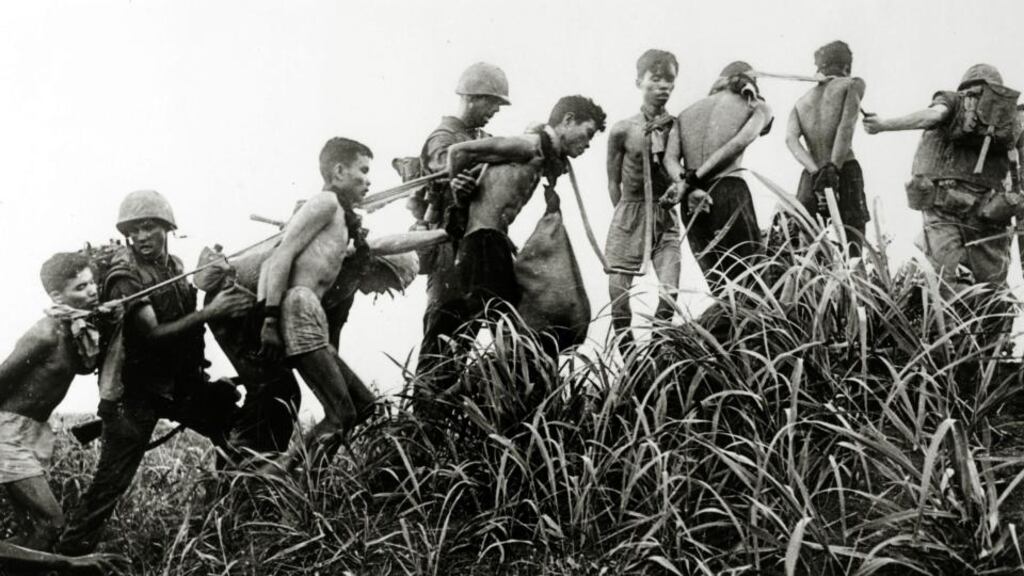The release of Last Days in Vietnam, a new documentary about the messy American withdrawal from the country in April 1975, could not have arrived at a more fitting time. The United States is now grappling with planning and funding what many see as a third war in Iraq, caused by what President Barack Obama's critics say was a ham- fisted exit from the second.
This compelling account of the humiliating American retreat from southeast Asia two years after the Vietnam war ended was made by filmmaker Rory Kennedy, youngest daughter of the late Robert F Kennedy who was assassinated three months before her birth.
Kennedy pulls no punches on the calamitous errors made by president Gerald Ford’s administration, but out of the mayhem she finds heroes among a handful of US military and intelligence personnel who acted independently of their government when their government failed to act.

Covering the final days before the fall of Saigon to North Vietnam, the film charts attempts by the Americans to evacuate, initially covertly, thousands of South Vietnamese who had helped the US, rather than leaving them to an uncertain fate under the communist north.
Riveting narrative
The story is told in a riveting narrative by the Americans who scrambled to get people out by vans, aircraft and boats – and also recalled by the South Vietnamese themselves, some of whom did not make it out.
Present-day interviews are intercut with remarkable footage unearthed by Kennedy of panicked South Vietnamese hanging on to the steps of an aircraft as it takes off or scaling the walls of the US embassy hoping to find a way out. There are those famous images of US navy men pushing South Vietnamese helicopters overboard on their ship to free up space for more helicopters ferrying fleeing civilians.
There were also bizarre moments, reminiscent of the fall of an empire. A number of US marines were assigned to burn $1 million in cash held on the US embassy complex. It took them eight hours.
The film untangles a misconception around one of the iconic photographs of Saigon’s fall – the helicopter landing on the top of a narrow building with a queue of people snaking up a staircase to the roof laden with suitcases. The building was not in fact the US embassy, as many believe, but an apartment building that was home to a CIA officer who had called in a helicopter during the chaotic exodus.
"As we began to contemplate evacuation, the question, the burning question, was: Who goes and who gets left behind?'" said Stuart Herrington, an army captain and one of those who defied orders.
When the signal came – Armed Forces Radio broadcasting the words, "the temperature is 105 degrees and rising," followed by the playing of Bing Crosby's recording of White Christmas – the official evacuation began. Vietnamese girlfriends and mistresses of US personnel were rounded up to be airlifted out along with the tailors who made clothes for the Americans and the chefs who cooked their meals.
Tragic figure
The film's most tragic figure, the late US ambassador Graham Martin, is portrayed as an honourable man unwilling to accept defeat. Martin refused to accept Saigon would be overrun and delayed an evacuation until the city's airport was shelled, severely limiting his options.
One contributor attributes Martin’s failure to the fact that his only son had been killed in the war – his emotional ties to the country meant he wouldn’t let go until it was too late.
A US Congress still reeling from an unpopular war was never going to rescue Saigon with financial aid. Ford's press secretary recalled that when Congress refused his request for $722 million in military aid it was the only time he heard the president swear.
The most affecting accounts in Kennedy’s dramatic film are those of the South Vietnamese left behind, some of whom were deceived into thinking there would be one more US helicopter to take them away. They ended up being “re-educated” in labour camps run by the former north.
“It was so serious and deep a betrayal,” says Herrington of the 420 South Vietnamese left at the embassy to whom he had promised there would be other helicopters coming for them. He quietly slipped away, into the embassy and left on one of the last helicopters.
“It was the whole Vietnam involvement in a microcosm,” Herrington says. “Promises being made in good faith, promises being broken, people being hurt because we didn’t get our act together.”
The Americans are returning again, to Iraq this time, to take on Islamic State militants in a new, open-ended strategy that Obama has vowed will not involve US combat troops.
Last Days In Vietnam shows the failure in retreat from a conflict without a clear exit strategy. It will make for uncomfortable viewing for those preparing to escalate a fight on an uncertain front.












